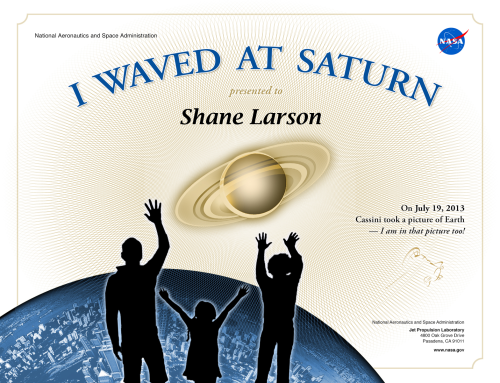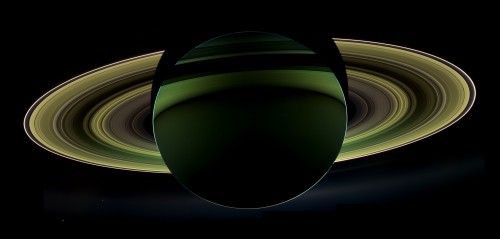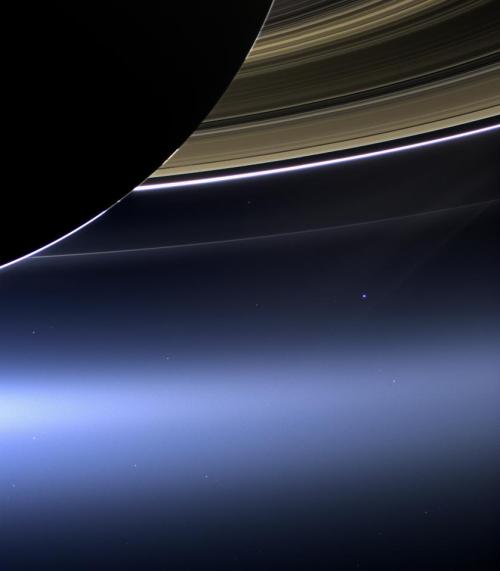by Shane L. Larson
We live in an age where digital technology can make anything seem real. Movies have become immersive experiences where any landscape, real or imagined is possible. Physics defying stunts are rendered on screens as tall as buildings and with sound louder than thunder. Creatures long extinct or completely imagined spring to life, and actors long since passed from the world magically return to the screen, appearing as they did in their youth. Anything seems possible, and the boundaries of reality are blurred, to say the least.

Anything can be given realism with modern technology, whether they be long dead creatures, imagined aircraft, or an architectural plan for a new building. [all images from Wikimedia Commons]
On many days, as the woes of the world sidle past me on my computer screen, I am reminded of something that I became aware of in my youth: the true masters of real pictures of the real world are the folks at NASA. They have long been part of the storytelling narrative, reminding us that we are part of a far larger Universe, showing us that with concerted effort and imagination and perseverance, we can overcome tremendous obstacles, solve incredibly difficult problems, and discover that the world around us is filled with unimagined and awe-inspiring grandeur. The Cosmos is alive and breathing around you, reminding you that you are part of something greater that the usual bibble-babble washing out of your device screen.

NASA’s digital artists are masters of putting us at the center of the action, even if it is impossibly far away. L to R: Curiosity skycraning onto Mars; Juno arriving at Jupiter; Cassini arriving at Saturn. [Images by NASA]
Saturn has been known to humans since antiquity, one of the bright moving lights in the sky known as the planētes asteres, the “wandering stars.” Like the other naked eye planets, Saturn moved slowly among the stars, tracing out a path along the band of constellations known as the Zodiac, cementing itself in the folklore and mythology of sky-gazers who watched it closely. In the 17th century, the era of Saturnian exploration began when the first telescopes were pointed skyward. The first fuzzy, warbling views of the world showed it was not like the stars at all. Telescopes improved rapidly, as did the views they showed of this far away planet, until at last we discovered the truth — Saturn was magnificently bejeweled by a brilliant, encircling ring. Since that time, Saturn has reigned supreme among all the planets for the awe it evokes at its splendor and beauty. More than any other planet, it looks like it is supposed to look. Today, millions of telescopes around the world are set-up in backyards and on sidewalks on clear nights, giving ordinary people like me and you views of one of the Cosmos’ great spectacles — you can have your own Saturn Moment.

View of Saturn you will have through a modern backyard telescope, taken with an iPhone [Image courtesy of Andrew Symes]
While there are effervescent dreams to send humans, Saturn is still too distant to imagine easily crossing the void ourselves, so our attention has been focused on sending quasi-intelligent emissaries in our stead: robotic explorers whose sole purpose is to gather as much information and take as many pictures as possible, and transmit all of that information back to Earth.

Our robotic emissaries, Pioneer 11 (left) and Voyagers 1 and 2 (right). These are the only spacecraft to have ever visited the gas giant worlds of the Solar System. [Images by NASA]

Closeup views of Saturn by Pioneer (left) and Voyager (right). Their time with Saturn was short because they were doing flybys (try taking a picture of your friend on the sidewalk as you drive by at 50 miles per hour…). [Images by NASA]

This image is one of the last pictures taken of Cassini in 1997, before launch; the whole spacecraft, together with a few of the people who gave it life. Not soon after, the rocket fairing was lowered into place and closed, cocooning Cassini inside. That was the last any human ever saw of it. [Image by NASA]

The images returned by Cassini have been stunning, and are far too numerous to do justice to here. A few favorites include: Hyperiod (top left), Enceladus (top center), Iapetus (top right), and Saturn backlit by the Sun (lower). [Images by NASA]

Some images from Cassini’s Grand Finale. (L) Saturn’s polar regions, up close as Cassini loops over the top of the planet for another ring pass. (C) One of the highest resolution images of the rings ever taken. (R) The small moon Daphnis, carving out a corridor in the rings. [Images by NASA’s Cassini Imaging Team]
But at the very end, when there is no where else to go, Cassini will finally succumb to the inexorable gravitational pull of Saturn, and be drawn down into the atmosphere. Travelling more than 75,000 miles per hour, it will burn up in a colossal fireball. One of a thousand meteors that might hit Saturn on any day, but this one from a nearby world. We won’t see Cassini. As it falls, it will be linked to Earth only by the tenuous thread of its radio link, faithfully relaying the last of its observations as it sinks forever into the ocean of Saturn’s atmosphere. At some point, we don’t know when, Cassini will be gone. With no one to see it, Cassini will disintegrate into nothing. Out of our sight, the last of our dreams and aspirations for Cassini will come to an ultimate end.
Will will mourn. But always we will return to the vast photo album we have assembled over its 20 year life. Like a long time friend departing for the other side of the veil of death, we can’t help but be simultaneously overwhelmed by sadness together with admiration for everything that this little robot has accomplished, against all odds. Cassini has forever transformed our understanding of Saturn. Saturn is a real place, as much a part of the story of our solar system and our home as anything we have ever seen.
Once again our artists capture what we cannot see, rendered in NASA’s End of Mission video, using the tools of entertainment to tell us the story of our long departed emissary in it last moments over Saturn. More than any other art or video I’ve seen, they’ve succeeded in evoking how truly huge and majestic Saturn is, and how tiny Cassini is by comparison. All that we know, all that we’ve discovered, we owe to a tiny robot immeasurably dwarfed by the planet it has so faithfully explored.
You owe it to yourself to go watch this video; reflect on all that Cassini is and was, and know that we are capable of doing tremendous things.
Ad astra per aspera. Fare thee well, Cassini.










![(L) The Grand Buddha of Leshan. (R) Sagrada Familia. [Photos by S. Larson]](https://writescience.files.wordpress.com/2014/01/leshansagradafamilia.jpg?w=500&h=190)


![I often dream of being able to visit the Moai of Easter Island. [Illustration by S. Larson]](https://writescience.files.wordpress.com/2014/01/moai.jpg?w=500&h=301)
![(L) The geometry of a lunar eclipse. (R) iPhone image of the total lunar eclipse on 10 Dec 2011. [images by S. Larson]](https://writescience.files.wordpress.com/2014/01/lunareclipse.jpg?w=500&h=204)
![(L) The geometry of a solar eclipse. (C) Image of total solar eclipse taken by Arthur Eddington in 1919. (R) Hydrogen alpha image of the annular solar eclipse on 20 May 2012 in Cedar City, Utah. [by S. Larson]](https://writescience.files.wordpress.com/2014/01/solareclipse.jpg?w=500&h=152)
![Transit of Venus seen from Wasilla, Alaska on 5 June 2012 [by S. Larson]](https://writescience.files.wordpress.com/2014/01/img_6290.jpg?w=500&h=374)




















